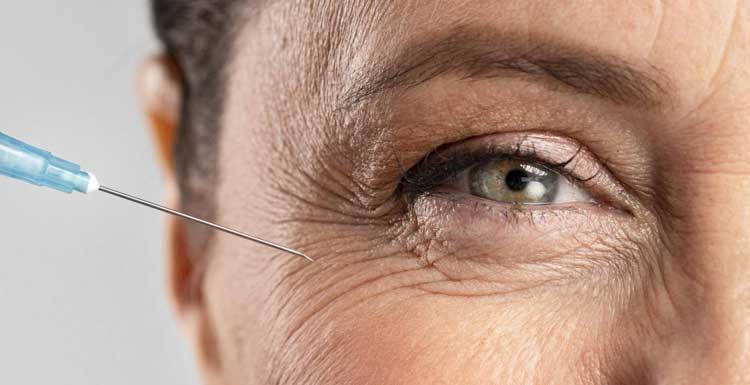How Does Botulinum Toxin Eliminate Skin Wrinkles? - Explained by Dr. Yeung Ho Hong (楊浩康)
楊浩康 醫生 (Dr. Yeung Ho Hong)

Botulinum toxin (肉毒桿菌素) has become one of the most popular anti-aging treatments in medical aesthetics, primarily used to improve dynamic wrinkles caused by repeated muscle contractions. For individuals new to medical aesthetics, botulinum toxin might still seem like a mysterious term. Today, let’s dive into the basic principles of botulinum toxin and how it effectively eliminates facial wrinkles.
The human face is capable of complex expressions, orchestrated by signals from the brain that travel along nerves to various facial muscles. When nerve endings release chemical transmitters, these substances bind to receptors on muscle fibers, triggering muscle contractions that produce smiles, frowns, and other expressions. However, frequent muscle contractions can leave fine lines and wrinkles on the skin, and as we age, these dynamic wrinkles—formed by repetitive movements—become increasingly prominent.
Botulinum toxin is a neurotoxin that acts as a nerve conduction blocker. Its primary mechanism involves inhibiting the release of chemical transmitters from nerve endings, preventing the targeted muscles from contracting normally. When a physician precisely injects botulinum toxin into specific facial muscles, movement in that area is temporarily suppressed. As a result, dynamic wrinkles caused by muscle activity gradually smooth out, leaving the skin looking flatter and firmer. It’s crucial to emphasize that accurate injection techniques and proper dosing are vital—only precise administration ensures that only the intended muscles are affected, without impacting the function of surrounding normal muscles.
Clinically, botulinum toxin is mainly used to improve dynamic wrinkles such as forehead lines (前額紋), glabellar lines (皺眉紋), and crow’s feet (魚尾紋), which result from repeated muscle contractions. However, for static wrinkles—those caused by skin aging, collagen loss, or other factors—botulinum toxin is less effective. Therefore, in facial anti-aging treatments, physicians often tailor the approach based on the type of wrinkles, sometimes combining botulinum toxin with fillers or other skin rejuvenation therapies to achieve a more comprehensive youthful effect.
Beyond wrinkle reduction, botulinum toxin is also widely used to treat hyperhidrosis (多汗症). When injected into areas like the underarms, palms, or soles, it can suppress excessive sweat gland activity, alleviating the inconvenience caused by over-sweating. This versatility makes botulinum toxin a multifaceted tool in medical aesthetics, enhancing both appearance and quality of life.
Despite its remarkable efficacy, botulinum toxin treatment carries certain risks and side effects. Common adverse reactions include over-correction (excessive muscle relaxation leading to a stiff facial expression), under-correction (failing to achieve the desired effect), and facial asymmetry. If the toxin inadvertently spreads to adjacent muscles, it may cause issues like drooping eyelids or a drooping mouth corner, affecting daily life. Fortunately, most side effects are temporary, and muscle function typically returns to normal as the toxin’s effects wear off. However, long-term or frequent injections may lead to gradual muscle atrophy in the treated area, potentially altering the natural dynamics of facial expressions.
Overall, the efficacy and duration of botulinum toxin treatment are influenced by factors such as the treatment site, individual metabolic rate, and lifestyle habits. Generally, the wrinkle-reducing effects of a botulinum toxin injection last approximately 4 to 6 months, after which many patients opt for repeat treatments based on their needs. To achieve optimal results and minimize the risk of adverse reactions, selecting a skilled and experienced professional physician is essential. Before treatment, the physician will thoroughly discuss with the patient, designing a personalized plan based on their facial anatomy and skin condition to ensure a safe and natural rejuvenation outcome.
In conclusion, botulinum toxin eliminates skin wrinkles by temporarily blocking nerve conduction, relaxing targeted muscles, and effectively reducing dynamic wrinkles caused by muscle contractions. This process demands precise injection techniques and a tailored approach based on the patient’s condition. While some side effects may occur during treatment, under professional guidance, botulinum toxin remains a safe and highly effective anti-aging therapy, allowing individuals to regain smooth, youthful skin and naturally dynamic facial expressions.
